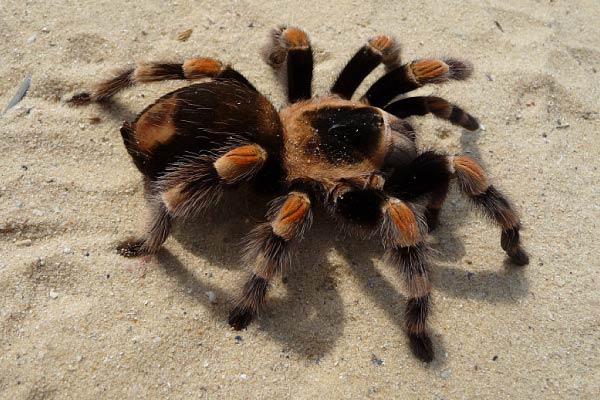Do Away with Arachnophobia
- POSTED ON: 22 Jun, 2018
- TOTAL VIEWS: 1039 Views
- POSTED BY: Neema Pathak Broome
- ARTICLE POINTS: 100 Points

I am sure you have seen people scream, cringe or shudder when they see a spider. Recently while travelling with a friend, we found a spider in the room. This was followed by a loud scream from her and a commotion, which brought the house owner running in with a broom. And, before we knew it, ‘pachak’ the spider was squashed.
I often face similar reactions when people come to our house. This is because I love spiders, and cleaning cobwebs in our house is discouraged. I wasn’t like this always, but being married to a field biologist has its thrills, and learning to love spiders has been one of them.
From the various creatures I often find in our house — in cloth bags, bottles, and jars (rescued by my husband from human habitation, to be released back into the wild), the most memorable was an eight-legged, brown and hairy four-inch long spider that he called a mygalomorph. It had crawled into my husband’s wagon, when he was in the Toranmal forests on the border of Maharashtra and Gujarat. For me, it was love at first sight!
Eight legged tales
Mygalomorphs are among the world’s largest spiders. There are many species of mygalomorphs in the world, but the ones that we hear most about are the deadly tarantulas in Australia. They are also called the Australian funnel-web spiders. Their large size, strong fangs with venom glands, and strength makes mygalomorphs powerful predators that feed on insects, centipedes, spiders, birds, reptiles, and even small mammals.
Despite their fearsome appearance and reputation, most mygalomorphs are not very harmful to humans, with the exception of the Australian funnel-web spiders.
There is not much known about these spiders in India. So, we were obviously excited when my husband walked in with one in a jar. He told us it belonged to a species called Poecilotheria regalis, which live in tree hollows in old growth forests. Not surprisingly, mygalomorphs have been found in timber yards in cities like Hyderabad, transported along with trees felled from the forests.
Although mygalomorphs are among the largest spiders, some species are much smaller and are found under rocks and in grasslands around villages and cities like Pune.
We had to host this beautiful animal for a few weeks, till my husband could release it in the same forests from where it came. An old aquarium was emptied and filled with leaf litter, twigs and small branches and small holes were created on the wooden roof for it to breathe.
Our family’s life for that period revolved around our new friend, taking turns to catch cockroaches, other insects, lizards, and small mice for it to eat. We were surprised to learn that mygalomorphs can live up to 15-30 years and hence are traded heavily as pets. When we bade a teary farewell to it a few weeks later, we prayed that the forest that it lived in would not be felled and that it would not be trapped to be traded.
After our guest spider left us, I started noticing the other spiders around us. They were everywhere — in the kitchen, bathroom, bedroom, garden…so many, so diverse, and so beautiful. I also found out that among the most common creature-based phobias in the world is arachnophobia — the fear of spiders. So when people spot spiders in their homes, they kill them at once or call in the pest control! But those who learn to co-exist with spiders begin to enjoy their diversity and beauty and appreciate their abilities to control pests by feeding on cockroaches, earwigs, mosquitoes, flies, and clothes moths, among other indoor pests.
After reading the above story, answer the following questions:
This article on Conservation and Nature is brought to you by Kalpavriksh Environmental Action Group. (www.kalpavriksh.org).